Engineering a Cancer Treatment Game Changer
A research team composed of scientists from New York Institute of Technology and the University of California, Irvine (UC Irvine) has developed an artificial human colon with unprecedented realism. The groundbreaking research project stands to bring safer, more effective cancer treatments to market sooner, while providing a new platform for broader disease research.
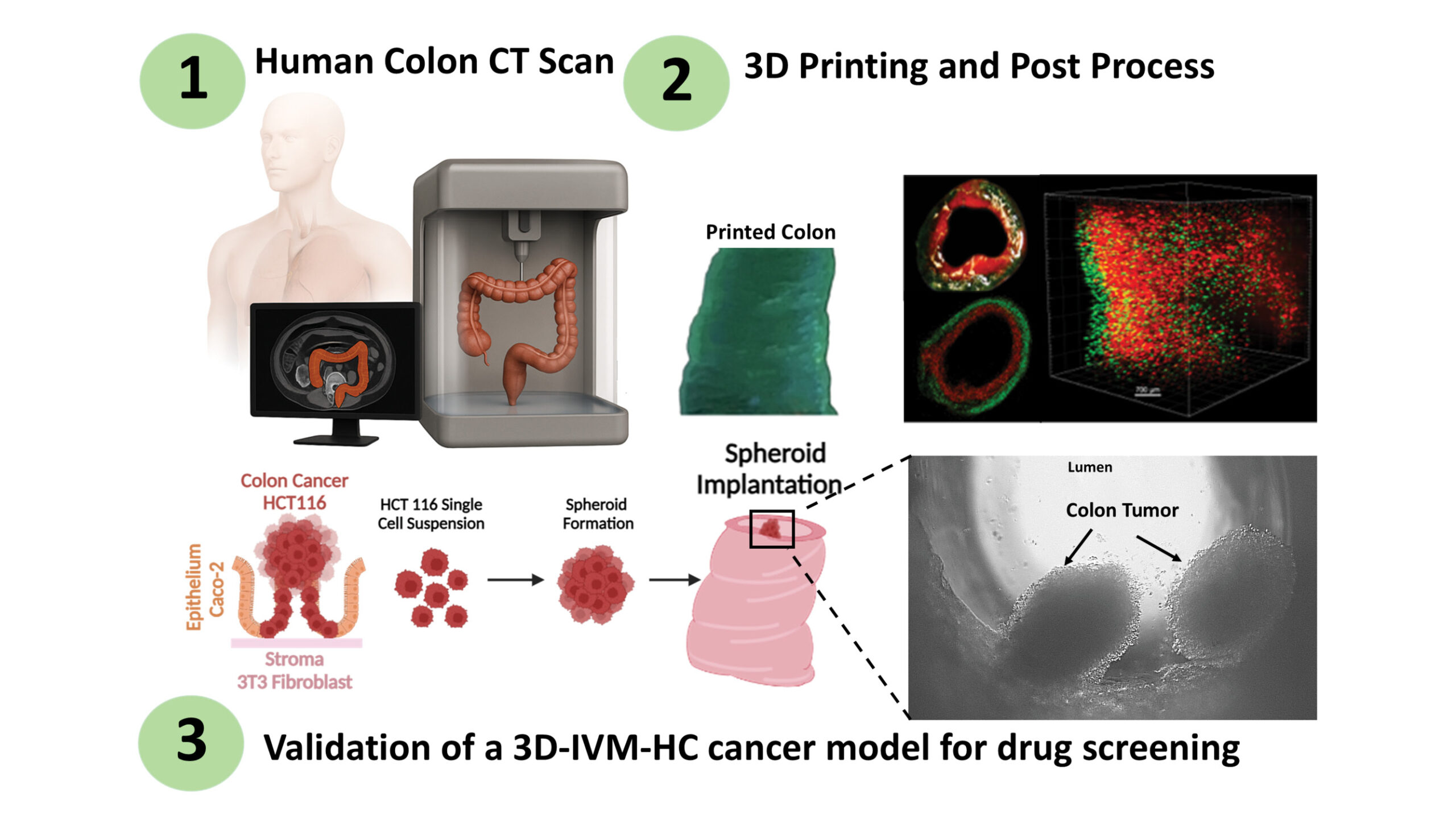
As featured in the journal Advanced Science, the cutting-edge project provides the world’s first functional, drug-testable, 3-D-printed human colon model. In line with recent movements to shift away from animal testing in drug development research, the model offers an alternative testing platform that accurately mimics the structural, mechanical, physiological, chemical, and biological complexities of human colon tissue. Co-led bybioengineer Steven Zanganeh, Ph.D., assistant professor at the College of Engineering and Computing Sciences, the project stands to significantly advance understanding of colorectal cancer and pave the way for highly effective precision therapies by providing a lifelike platform for drug efficacy testing. It also lays the groundwork to create highly realistic models of other human organs.
“This is, to our knowledge, the first model of its kind and represents a true leap forward in biomedical innovation,” says Zanganeh, who ultimately aims to commercialize the prototype. “While this project successfully replicated a human colon, it also opens doors to create functional tissue for virtually any human organ. This breakthrough points to a future in which therapeutic testing can be performed without dependence on traditional cell cultures or animal models, streamlining the path to clinical trials. What once sounded like science fiction is now reality.”
The team used human CT scan data to map the colon’s anatomy in detail, then employed advanced bioprinting with hydrogels to fabricate a model that mimics its principal layers and functions. Within their engineered model, fabricated at UC Irvine, the team also introduced and successfully treated a tumor, creating a new and powerful platform for cancer drug discovery and disease modeling.
“Our 3-D, human-relevant colon model overcomes key limitations of 2-D cell cultures and animal studies. It lets us study disease and drug responses in a way that is far closer to the patient, opening a faster, more reliable path to new therapies,” says Rahim Esfandyar-Pour, Ph.D., assistant professor of electrical engineering and computer science at UC Irvine.
Next, Zanganeh and his research team, which includes doctoral and graduate students from New York Tech’s College of Engineering and Computing Sciences, as well as a student from the College of Osteopathic Medicine, aim to develop additional 3-D tissue models. This includes prototypes capable of withstanding electrical stimulation (recreating conditions that transport substances and molecules across cell membranes) and those replicating immune function. New York Tech student researchers include Engineering, Ph.D. students Armand Ahmetaj and Elahe Zafarvahedian; Bioengineering, M.S. students Ayush Kumar, Gaby Burgos-Crespo, and Yianni Daniil; Bioengineering, B.S. major Anna Dykhno; and medical student Kyle Egan.
“By combining cutting-edge bioprinting with interdisciplinary collaboration, Dr. Zanganeh and his colleagues have opened a new frontier in cancer research. We are proud to see our faculty leading discoveries with the potential to transform medicine and improve lives worldwide,” says Babak D. Beheshti, Ph.D., dean of the College of Engineering and Computing Sciences.
More News
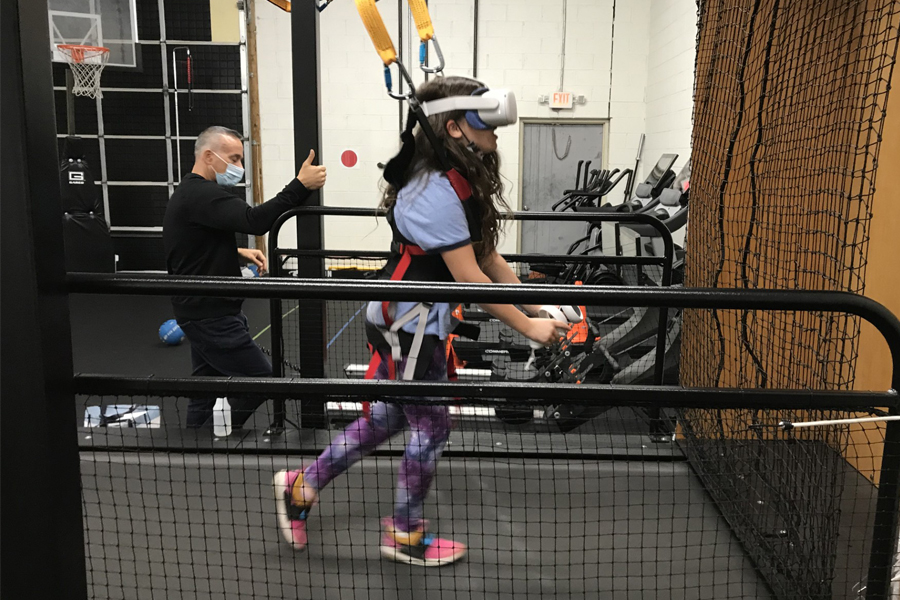
Study: VR Helps Children With Autism Participate in Exercise and Sports
A new study by researchers from the School of Health Professions and College of Osteopathic Medicine demonstrates how virtual reality (VR) can help children with autism spectrum disorder participate in exercise.
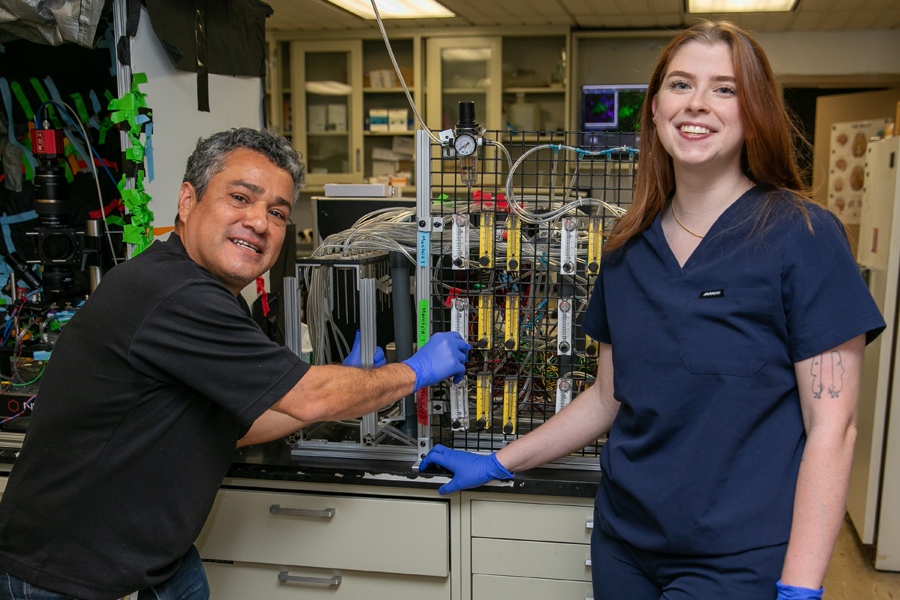
Driven by ‘Why’
Third-year medical student Kassandra Sturm leads the charge on a new study helping to uncover the neurological source affecting the sense of smell in autism spectrum disorder.

Technology Partnership Helps Children With Disfluencies
Former NBA star Michael Kidd-Gilchrist has partnered with the College of Engineering and Computing Sciences’ ETIC to develop a prototype of a technology platform that he hopes will help children who stutter.
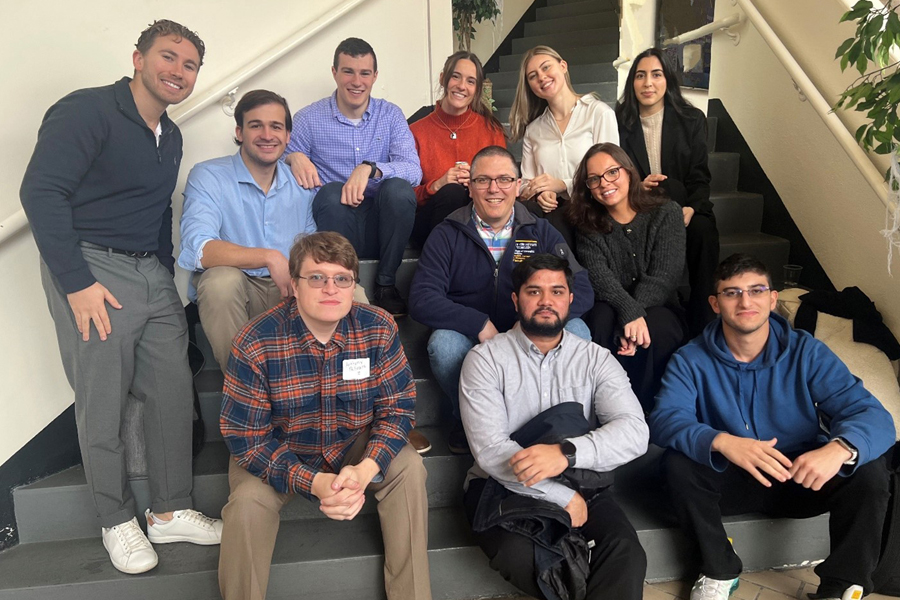
Gut Instincts: Solving Microscopic Mysteries
Research by NYITCOM Assistant Professor Vladimir Grubisic, M.D., Ph.D., aims to deliver findings that could pave the way for new treatments benefiting patients with gastrointestinal and neurological diseases.

Edward Guiliano Global Fellows: Culture Across Continents
Under the Edward Guiliano Global Fellowship program, seven students traveled the globe, broadening their perspectives and working on transformational research projects.
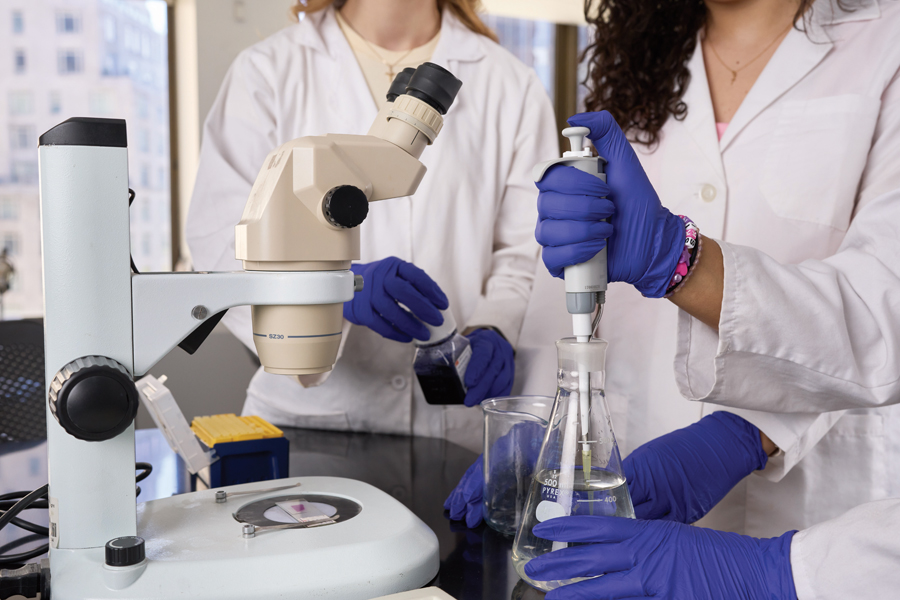
Faculty Secure Federal Research Grants
The National Institutes of Health and the National Science Foundation recently awarded funding to multiple faculty-led research projects, totaling more than $2.8 million collectively.